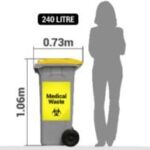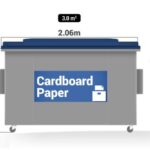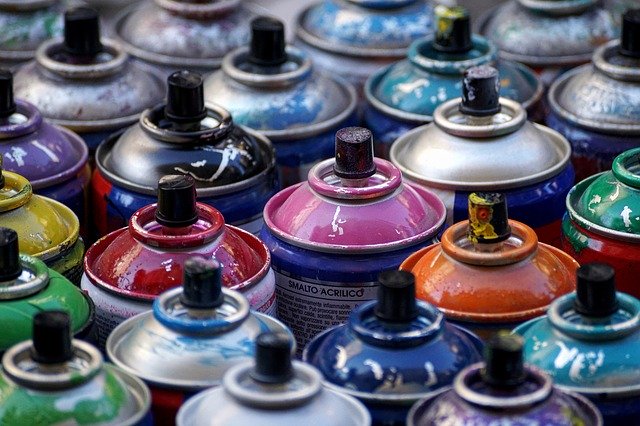Asbestos Disposal – All You Need To Know 🏠
Energy Disrupter
Asbestos Disposal 🏠: Recently, the NSW government proposed a waste levy removal of the dangerous fibre known as asbestos. Do you know what asbestos is and what it does to your health? Furthermore, do you know its uses?
Learn the importance of the disposal of asbestos here. Let me discuss it with you.
You can read about the severe health issues from asbestos here.
A Bit About Waster
Before I continue with the topic on asbestos disposal, let me first share with you Waster.
We here at Waster provide you with innovative solutions for you and your business’s waste management and recycling needs. Additionally, we provide flexible, 30-day contracts instead of the typical lock-in contracts, which proves to be better.
Click on the blue button to learn more.
>Download Now: Free PDF Business Owners Guide To General Waste Bin Services
What Is Asbestos?
Before anything else, let me first discuss what asbestos is. Asbestos is some type of fibrous material that consists of thin fibres. According to research, people from as early as the 1800s already made us of it. But some studies also state that asbestos was utilised from as early as 4000 BC.
Early people from the 4000 BC period used it for creating a type of candlewick as its fibrosity helped the candlewick catch flames. Later in the 1800s, people used it for fire-proofing, sound-proofing and insulation. The shipbuilding industry also used it for insulating boilers and different types of pipes.
Furthermore, the vehicular industry used it mainly for creating vehicle brake shoes and clutch pads. In a different time then, the health implications and proper disposal of asbestos were very much unknown.

Asbestos’s Main Uses Nowadays
Until recent times, asbestos has been used in a variety of ways. More than 5,000 products then contained asbestos. Here are the following (courtesy of EHSO):
- Floor tiles
- Cement sheet
- Steam pipes
- Boilers
- Furnace ducts
- Millboard
- Paper
- Door gaskets
But nowadays, though, most products do not contain asbestos anymore due to the banning of the majority of products containing it. Those that do are required to be labelled as such. Additionally, those products that contain asbestos should be subjected to proper disposal. Why is that? Let us discuss.
Can You Recycle Asbestos?
Ideally, the answer to that is yes. Recyclenation.com explains:
“Asbestos can be heated to very high temperatures and turned into silicate glass. The material is completely inert and will not cause cancer. Silicate glass can be used to create ceramic and stoneware products.
Hard to believe a product that could give you cancer in one form could be completely safe to eat off in another, but it seems to be a miracle of modern science.”
However, in reality, the vast majority – if not all – of asbestos in Australia ends up in a landfill for deep burial. The reason: facilities and the likes will find it difficult to recycle.
Health Complications From Asbestos
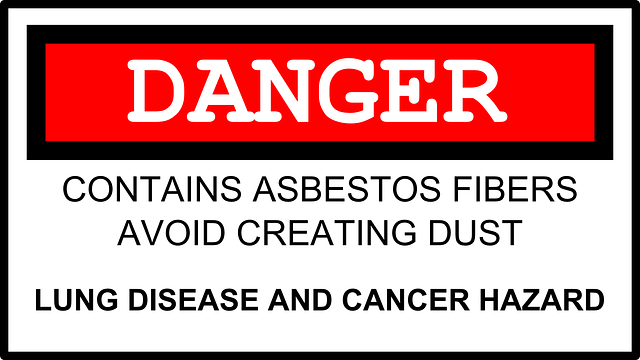

The main reason for the banning of asbestos is the health hazards it poses to us. First of all, breathing in asbestos fibres can cause what we call asbestosis. Asbestosis is a lung disease that forms when small fibres scar your lungs. Having asbestosis causes you to:
- breathe faster due to shortness of breath
- chest tightness
- continuous dry cough
- chest pains
- loss of appetite
Additionally, breathing in asbestos also causes an individual to contract various respiratory diseases like lung cancer and mesothelioma.
People who smoke tend to inhale asbestos fibres more often than those who do not. Moreover, the symptoms usually appear 20 to 30 years after being exposed for the first time. As a result, it is of the utmost importance to ensure the proper disposal of asbestos.
Importance Of The Disposal Of Asbestos
Did you know that illegal dumpsites around Australia contain about 8 per cent of asbestos waste? In order to avoid this and promote a safe method of disposal, the NSW government proposed the removal of the asbestos waste levy. The said proposal will remove the levy imposed on the asbestos waste of up to 250 kilograms in an effort to remove illegal landfills all across Australia.
Moreover, “illegally dumped asbestos poses a threat to human health and our environment and results in significant clean-up costs,” Energy and Environment Minister Matt Kean said. “The safe and lawful management of asbestos waste is a priority for this government and that means making legal disposal of asbestos waste easier and cheaper,” added by him.
Current levies go up to 143.60 dollars per tonne for Sydney metropolitan sites, while the levies in regional ones amount to 82.70 dollars, as stated by the Environment Protection Authority.
NSW Waste Strategy For Asbestos
The levy removal is part of a much broader waste strategy named the NSW Asbestos Waste Strategy 2019-21.
This waste strategy aims to propose an “innovative measures to reduce illegal dumping and unsafe disposal” and “promote lawful and appropriate disposal of asbestos waste”. Important things to note in the waste strategy are the following:
- The Protection of the Environment Operations Act 1997, or POEA Act, for short, requires some licensed NSW waste facilities to pay a contribution per tonne of waste received at those said facilities.
- The contributions aim to address the reduction of waste going into landfill and encourage recycling and resource recovery.
- The EPA will not remove the waste levy on asbestos mixed with other products, such as soils or other construction and demolition waste. See our blog on Development Application Waste Management.
Their approach to implementing the NSW Waste Strategy includes the following:
- Making waste asbestos disposal easier – aims to help give more viable options for asbestos disposal.
- Making waste asbestos disposal cheaper – aims to work with the local government in order to provide cheaper ways to lawfully dispose of asbestos.
- Increasing awareness and changing behaviour – aims to work with the local government in order to educate people and help them change their ways to ensure proper waste management.
- Closing loopholes and increasing transparency – aims to work with the local government and SafeWork NSW to close loopholes on operators to ensure understanding of where the asbestos is being moved to, and who is not disposing of it the proper way.
- Disrupting unlawful business models – aims to basically remove any illegal activities involving asbestos disposal.
- Monitoring and evaluating – aims to report every two years the progress they have made.
In Other News…
Asbestos Disposal Skips: Why The State Government May Remove The Waste Levy From Asbestos Disposal
We covered in a recent blog how the waste levy on dumping at landfills is designed to incentivise recycling and also raise funds to invest in recycling facilities. This does not make as much sense for asbestos disposal skips dumping in the appropriately licensed facilities.
Recycling asbestos is extremely difficult, if not impossible. So, there is no real incentive to recycle or divert. In fact, facilities are not even common in Australia.
If It Is Not Recycled And There Are No Facilities, Is A Levy On It A Good Idea?
As recycling of asbestos is not really an option, particularly when mixed with concrete and other materials, does a levy on dumping asbestos make sense? No one will find it sensible increasing the price of treating it correctly because of the major health hazards in handling it.
Basically, the levy services the opposite purpose. It increases the incentive for dishonest companies to illegally dispose of the product. No one wants that to continue happening, right?
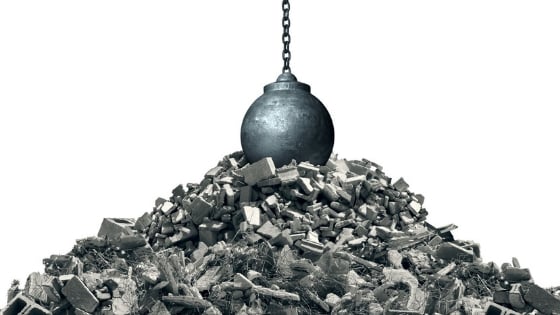
This was the case in 2013 when asbestos was illegally dumped in front of a child care centre! It makes sense to remove the levy on asbestos in many ways. The NSW State Government discussed this again last 2019, having previously trialled it in 2014.
Insights On Asbestos Disposal Skips
Removing any waste levy on asbestos disposal skips makes lots of sense. However, every cloud has a silver lining – and the reverse.
It would also make sense for people to claim their general waste is contaminated with asbestos and hence avoid the levy also.
This would lead to real reverse incentives – and is something that needs to be worked out prior to any levy reduction.
Looking For A Company To Help You With Asbestos Disposal?
Waster can provide skip bin hire for asbestos removal. We follow best practise procedures for transport and disposal of the material.
Waster can provide your skip bin size requirements for most waste types. Skips are available from 2 cubic metres (i.e. smaller than the size of a box trailer) upwards.
Asbestos Wastes can be classified into two categories:
1. Stabilised Asbestos is any waste containing asbestos in a bonded matrix(e.g. asbestos cement sheeting “fibro”) and bituminous floor tiles/roof sheeting.
2. Asbestos Fibre and Dust Waste is any waste containing asbestos dust or fibres. Examples include brake lining dust, acoustic insulation, thermal insulation (lagging), and dust from ventilation collection systems.
Useful Advice For Disposal Of Asbestos Materials
1) Stabilised Asbestos
Small quantities (i.e. hand-unloaded material):
-
- Thoroughly wet each sheet of asbestos with water
- Wrap asbestos waste in heavy-duty builders plastic (the grade of plastic must be at least 200 microns thick)
- Completely seal the package, using builders tape or duct tape. Packages must be wrapped in manageable sizes for unloading
- Carefully unload waste to prevent the release of dust. You will be directed to the appropriate disposal area and asked to hand unload the material.
Large quantities (i.e. in tipping vehicles):
-
- Line the vehicle or container with heavy-duty builders plastic sheeting.
- Thoroughly wet each sheet of the waste.
- Load the material into the container or vehicle.
- Fold the plastic sheeting over the waste and secure it with builders tape or strong duct tape.
- Carry the unloading process out in a manner that minimises dust release.
2.) Asbestos fibre and dust waste
In accordance to Protection of the Environment Operations (Waste) Regulation 2005 – Clause 42, asbestos waste that is in the form of asbestos fibre and dust waste must be covered in such a manner as to prevent the emission of any dust. It must not be collected and stored except in accordance with the following procedures:
-
-
- Each bag must be made of heavy-duty, low-density polyethylene of at least 0.2mm thickness, and have dimensions of no more than 1.2m in height and 0.9m in width;
- Each bag must be sealed by a wire tie, and contain no more than 25kg of waste;
-
Also, each bag must be marked with the words “CAUTION ASBESTOS” in letters of not less than 40mm and which comply with Australian Standard AS 1319 – Safety Signs for the Occupational Environment. AsbestosAustralia provides regulations for each state and territory relating to the safe handling and disposal of asbestos.
Check out our blogs on rubbish dump Sydney, recycling bin services, and dumpster rental. Also, see a useful video from Worksafe Queensland detailing some safety tips for working with asbestos.
[embedded content]
Asbestos Disposal: Conclusion
Asbestos should be disposed of properly in order to avoid endangering human health. Additionally, steps are now being taken to fight off the illegal asbestos disposal phenomenon.
Are you in need of asbestos disposal services and located in Brisbane, Sydney, or other parts of Australia? Look no further; Waster can provide services to this type of waste! Contact Waster if you need asbestos disposal services.
If you’re looking for recycling bins, check our waste recycling shop and find the best deals in terms of pricing and services.
Also, please call 1300 WASTER (1300 927 837), or email us at [email protected] if you have any further questions.




